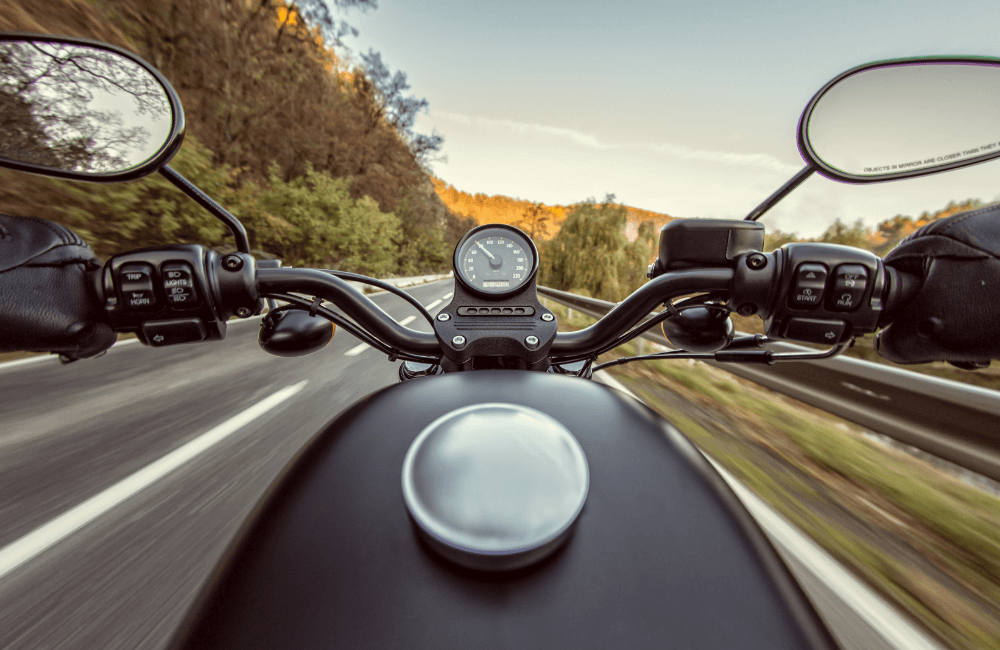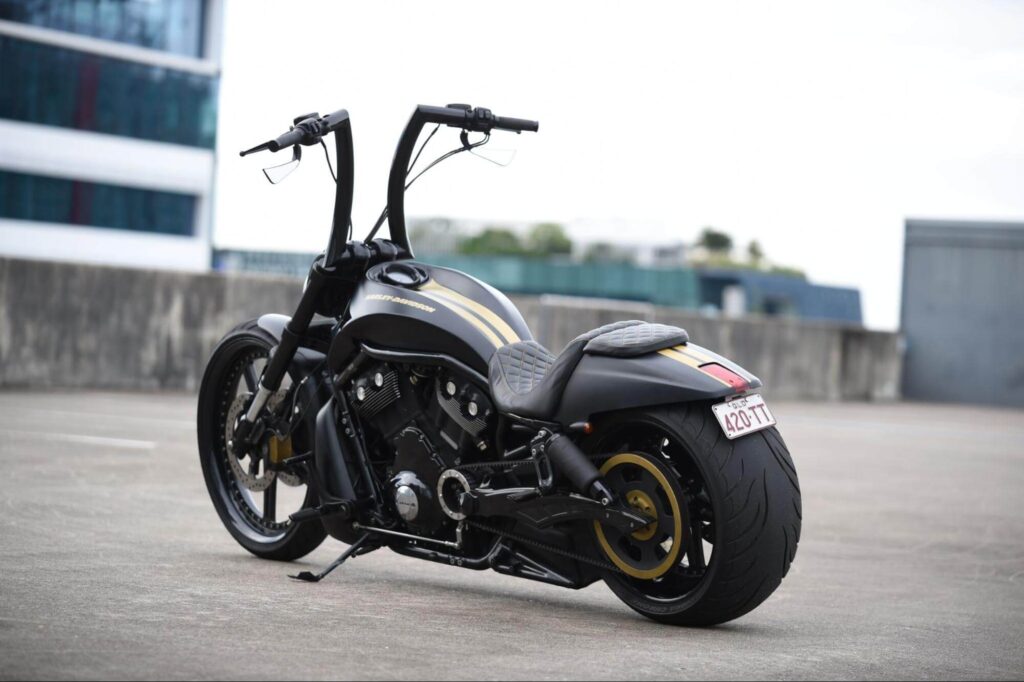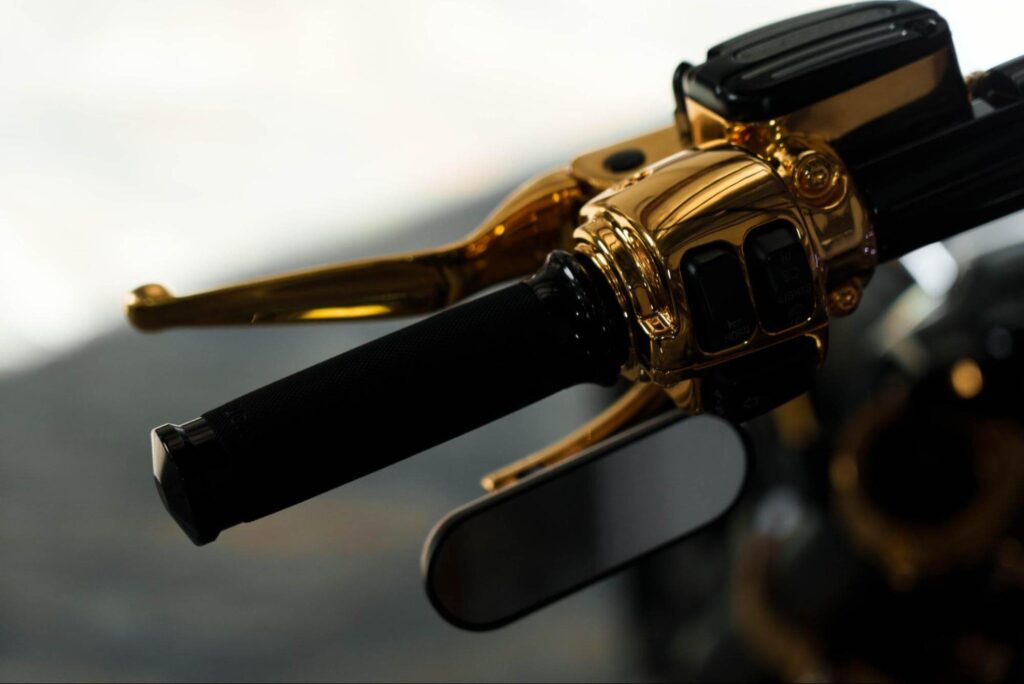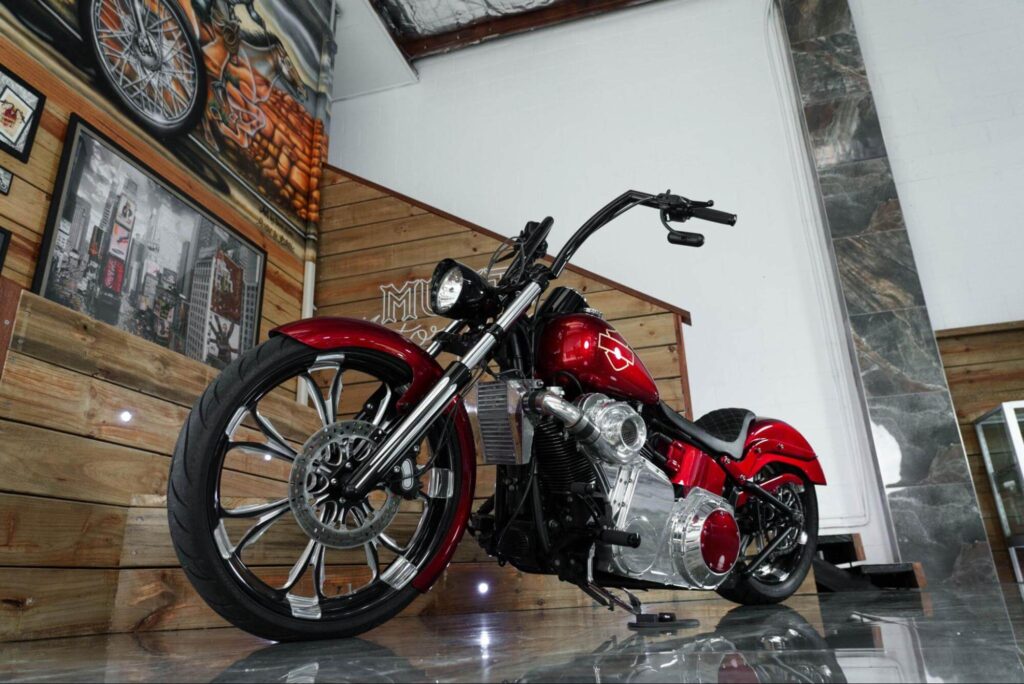Motorcycle handlebars—get a grip, literally. The handlebars are the unsung heroes of the motorcycle world. Every bike has them, yet they are overlooked when planning performance upgrades for a motorcycle.
Handlebars can come in many different shapes, sizes, and designs. Handlebar modifications exist, too. One option is to get handlebar risers, which increase the height of the handlebars for comfort and style.
It’s also possible to get adjustable handlebars. This way, you can adjust the pullback, rise, and angle of the handlebars to suit your body size and preferred riding position. There are even clip-on handlebars designed for riders with a forward-learning riding style.
Handlebars are important for more than just cosmetic purposes—although they play a massive role in the style of your bike and in expressing your personality. Handlebars can be the difference between an aching back and numbness in your hands or not. That’s where custom handlebars, adjustments, and modifications come in. They can be used to modify the handlebars for your specific body size and riding style to increase comfort and prevent lousy posture or pain.
Aligning Your Motorcycle Handlebars

Before upgrading or modifying your motorcycle handlebars, you can get them aligned. This can help increase comfort, especially if you haven’t had an alignment done before and are experiencing discomfort.
Misaligned handlebars can cause handling issues, discomfort, and potentially an unsafe riding experience. Below, we’ve outlined the general steps to aligning your handlebars.
- Gather the tools required. Depending on your motorcycle’s make and model, you’ll probably need a socket wrench or spanner set, measuring tape or ruler, and a level (for precision).
- Before aligning your motorcycle’s handlebars, you’ll want to visually inspect them. Stand in front of your motorcycle and inspect the handlebars with respect to the front wheel and the tank.
- The handlebars should be parallel to the front wheel and look centred. If they aren’t, you’ll continue with the following alignment steps.
- Prepare the motorcycle by stabilising it—placing it on a flat surface and ensuring it’s stable. You’ll also want to loosen the control cables so you can move the handlebars freely.
- Locate the handlebar clamps and loosen their bolts. This will allow you to freely move the handlebars and adjust them for alignment.
- After the clamps and bolts are loose, you’ll be able to freely move the handlebar into a more desirable position. They should be level and centred with the front wheel.
- Following aligning your handlebar, you’ll want to tighten the handlebar clamps and bolts.
- Before going on a test ride, perform another final visual inspection. Check the alignment of the front wheel and tank.
- Take the bike on a short ride to test the alignment. If it doesn’t feel quite right or is uncomfortable, repeat the process and make minor adjustments.
Upgrading Your Motorcycle Handlebars

Upgrade options exist if you’re looking to improve your handlebars and riding experience. Motorcycle handlebar upgrades can improve your bike’s comfort, control, and aesthetics.
When deciding to upgrade your handlebar, there are a few factors you should consider. These include your riding style, ergonomic needs, and the type of motorcycle you own. Below, we’ve outlined the different types of handlebars.
Clip-on handlebars
These types of handlebars attach directly to your motorcycle’s fork tubes. They’re common for track-focused motorcycles and sport bikes. They’re perfect for riders who want better control for high-speed riding and cornering.
Drag bars
These handlebars feature a straight design, which is good if you want a low, wide grip. They are often found on drag bikes and are ideal for a minimalistic look.
Ape hangers
This type of motorcycle handlebar is tall, requiring the rider to reach up to grab it. It is common for cruiser motorcycles, particularly custom chopper bikes.
T-bars
This type of handlebar is like a cross between drag bars and risers. It’s a great option if you want a taller handlebar with a straight, crossbar-like design. It’s perfect for cruising and aggressive riding styles.
Z-bars
These handlebars have an extremely distinctive zig-zag shape and are typically used on custom builds, such as bobbers and choppers.
Clubman bars
This type of handlebar is common among cafe racers. It features low, angled bars that drop down and forward. These bars are popular for aggressive riding styles, and the low angle helps with aerodynamics.
High-rise/tall bars
These bars are similar to ape hangers but aren’t as severe. They’re typically shorter, providing a higher grip position without being as tall as an ape hanger. They’re a good middle ground.
Other Improvements For Motorcycle Handlebars

Along with custom handlebars, it’s possible to get other modifications and improvements made for them. Upgrading your handlebars is just the start of improving your motorcycle’s comfort and handling. Below, we’ve outlined additional enhancements you can make to your handlebars to enhance your riding experience.
Bar-end mirrors
It’s possible to replace your traditional mirrors with bar-end mirrors. These can significantly improve visibility, allow for a wider field of view, and reduce clutter on your handlebars.
Grips
If you find that your current handlebar grips are too uncomfortable or hard to hold for long periods of time, you can change them to textured grips, which will reduce hand fatigue.
Handlebar risers
If you find that your handlebar is too high or low, handlebar risers can raise and/or bring the handlebars closer to you without having to install a custom handlebar. They’re particularly useful for reducing back strain and making daily rides more comfortable.
Throttle locks/cruise control
Throttle locks or an electronic cruise control system can be installed on your bike’s handlebars. This makes it easier to maintain a consistent speed without constantly gripping the throttle.
Bar-end weights
If you find that your handlebar vibrates too much due to the engine, you can fit bar-end weights on the end to help reduce it.
Custom brake and clutch levers
If you want to fine-tune the feel of your motorcycle, you can adjust or customise the brake and clutch levers on your handlebar. Longer levers are popular for cruising, while shorter levers are typically for sport/performance riding.
Upgrade Your Motorcycle Handlebars With Taverner Motorsports

Upgrading your clutch, brakes, and exhaust is important, but don’t forget about your motorcycle’s handlebars. Here at the Taverner Motorsports team, we can upgrade your handlebars as part of our custom workshop services.
In fact, custom motorcycle handlebars are one of the most common requests that we receive. Handlebars can significantly impact the riding experience and comfort. It’s also a game changer when it comes to the overall styling of your motorcycle.
Whether you want to change the colour of your handlebars, the size, or design, the Taverner Motorsports team can help you. If you haven’t already considered it, upgrading your handlebars is also a fantastic time to upgrade your grips or change to a custom set of mirrors.
When choosing us, you can expect complete transparency. The Taverner Motorsports team will update you every step along the way with estimated costs and a timeline for completion.
Whether you’re looking to upgrade your handlebars or you have other ideas in mind for your motorcycle, contact the Taverner Motorsports team today and request a quote.
